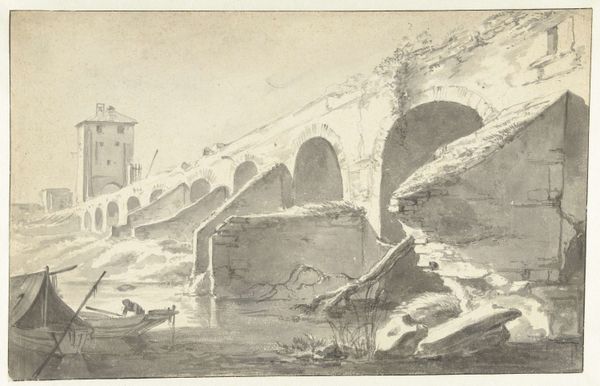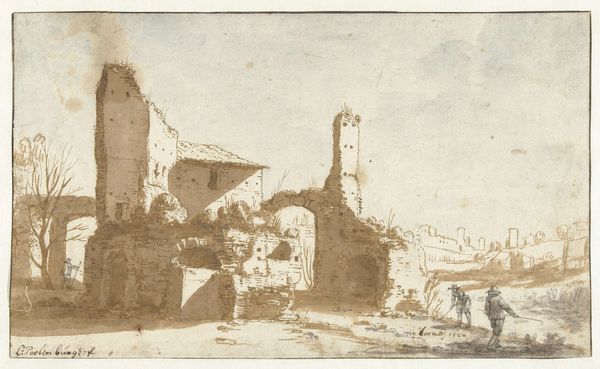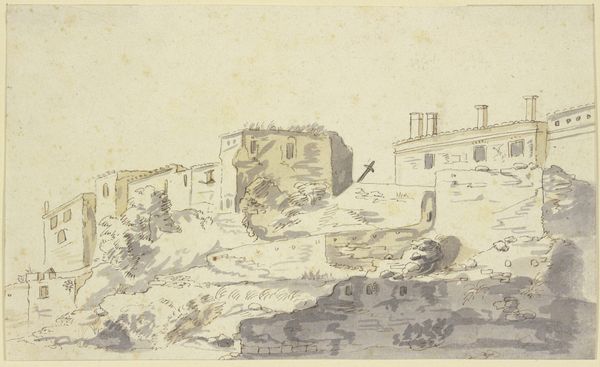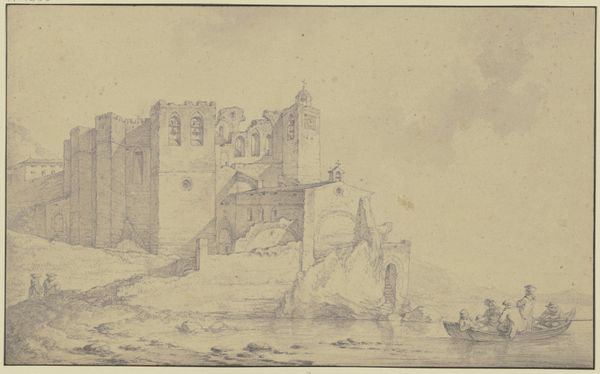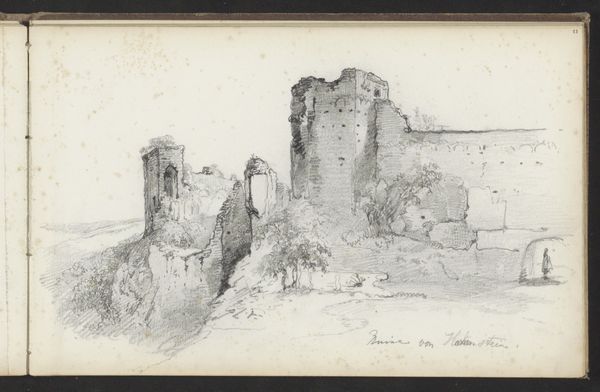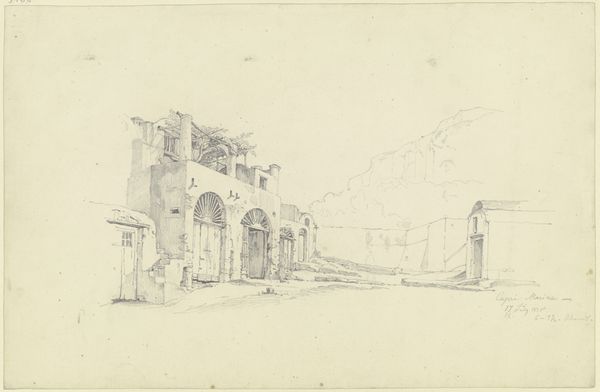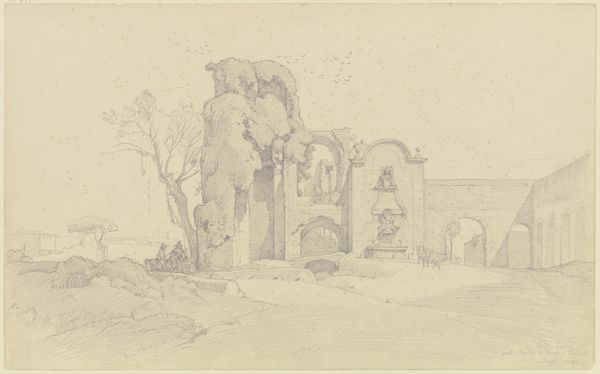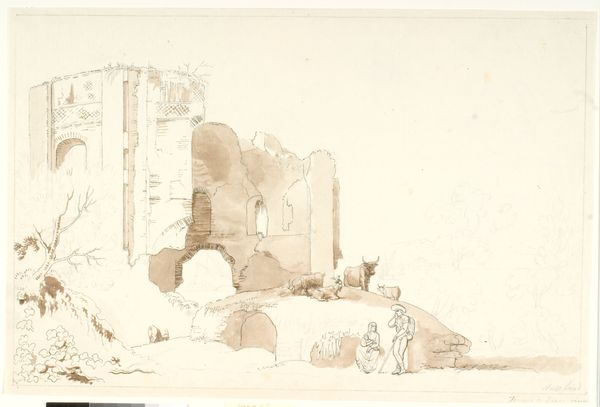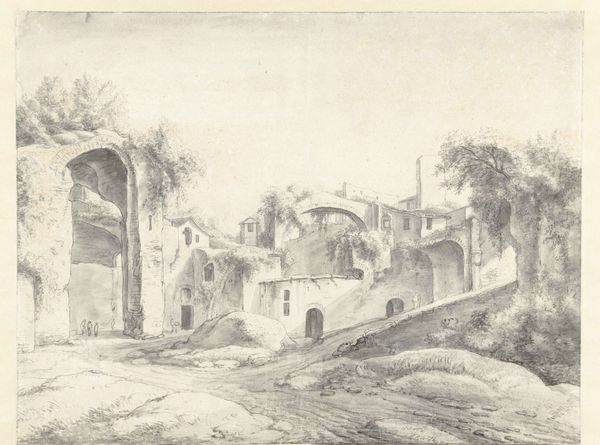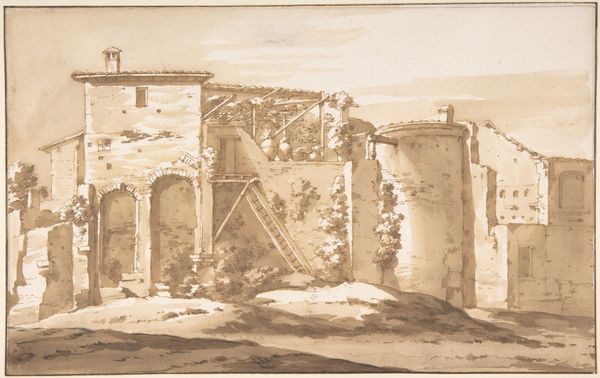
drawing, ink
#
drawing
#
ink painting
#
landscape
#
ink
#
romanticism
Copyright: Public Domain
Curator: Looking at this sepia ink drawing, "In den Ruinen von Wolfstein in der Oberpfalz" by Johann Christoph Erhard, created around 1815, I'm immediately struck by a feeling of melancholy. The ruined architecture and muted tones evoke a sense of loss and the passage of time. What are your initial thoughts? Editor: It has a visual starkness to it, doesn’t it? A very literal representation of decay, of a specific form stripped of its intended function, left to stand as a reminder of something else. There is a real evocative power in its decline. It begs questions of power structures and societal fragility. Curator: Precisely. The Wolfstein ruins depicted weren't merely abandoned buildings; they were symbols of feudal power dismantled in the wake of societal shifts. The Romantic era was consumed by a longing for idealized pasts but also faced emerging modernity; Erhard’s rendering engages with this complex interplay. Consider how this piece fits into contemporary dialogues around memory, heritage, and power dynamics within landscape representation. Editor: Indeed. I see in the architecture the persistent language of power - Romanesque arches, fortified walls now porous and skeletal - yet softened and consumed by vegetation. I detect in this symbology nature claiming back the realm. The deliberate rendering in ink suggests a preservation act; in rendering it with his choice of medium Erhard perhaps grants this ruin eternal significance beyond the physical. Curator: That’s astute. Moreover, we see, through a contemporary lens, how Romanticism often excluded marginalized voices in its nostalgic revisitations. How does this historical amnesia affect our understanding of landscapes today, particularly in the context of land ownership and cultural erasure? Editor: It certainly gives pause, thinking about how this ruin might signify very differently to, say, local peasant communities, those pushed to the fringes, dispossessed by those very castles now picturesque objects of artistic fascination. Even this sepia palette carries weighted historical connotations – sepia tones evoking times past as an enduring cultural metaphor, reminding us, aesthetically, what’s changed... and what has remained. Curator: Well observed. Erhard’s image speaks to this push and pull of history, progress, and enduring narratives of power. It invites reflection on the layers of meaning we ascribe to both our built and natural environments. Editor: Absolutely. What a subtle, thought-provoking work! I think the symbols are working well and carrying the artwork as a whole.
Comments
No comments
Be the first to comment and join the conversation on the ultimate creative platform.
